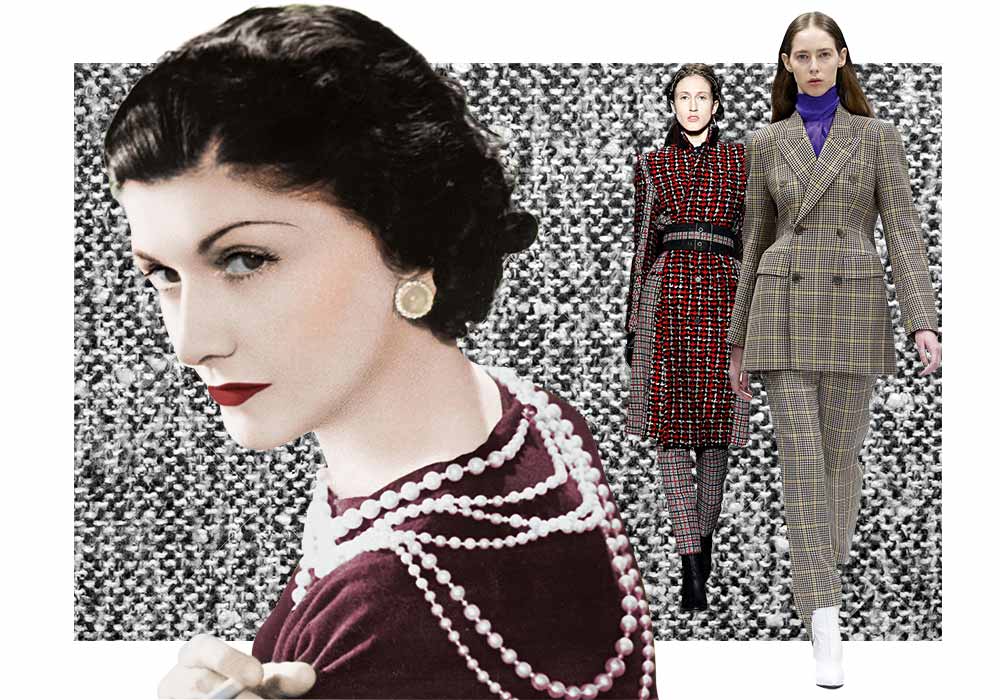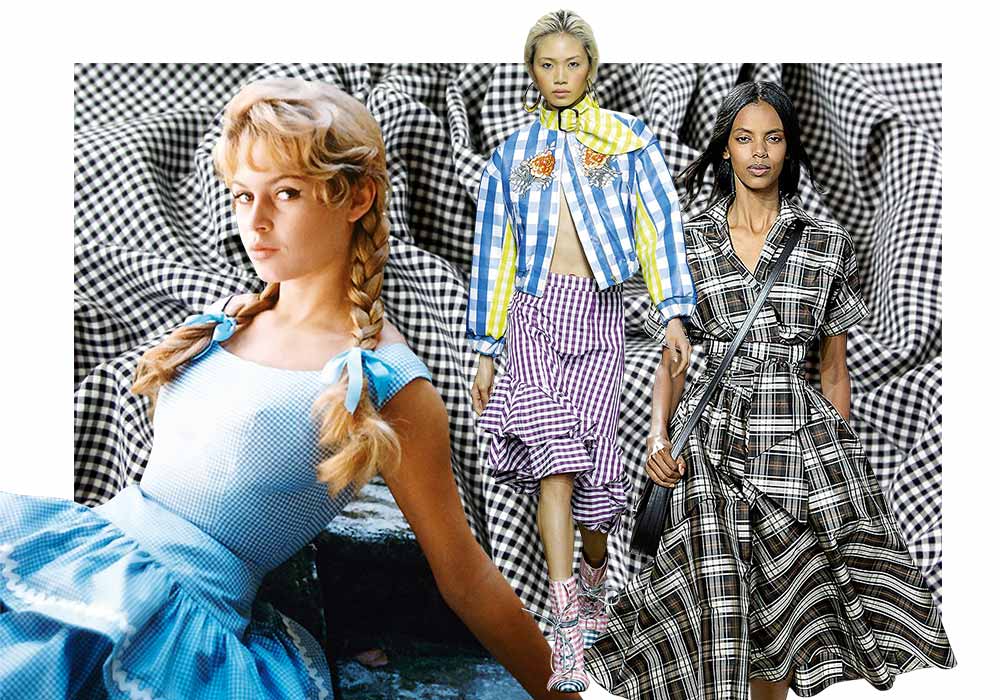Fine Prints: The Origin of the Heritage Trend.
Trace back the roots of fashion’s most enduring trend.
Enduring chic is built on lasting appeal—the persisting allure of the heritage trend stands on its versatility. While many fashion experts may back away and say that it’s over and done with, we beg to differ. In a world immersed with recyclable garments and fast fashion, there is more than a need for heritage. Its way of dressing is perhaps the stealthy antidote to an outwardly polished look. Integrating logos, embellishments, intricate detailing, and a dash of logomania to basics, sartorially speaking, effortlessly elevates the classic. From gingham to the more modernistic stripes, we delve into the origins of this longstanding trend.
TWEED

The signature of Chanel, there’s nothing quite as iconic as the luxurious tweed. Menswear enthusiasts knew that its texture, weight, and appeal are the very things that make this such a ritzy fabric. Coco Chanel was not only inspired by menswear, but by a man—and a Duke no less. Borrowing athletic threads from her beau, the Duke of Westminster, she realized the ductile tweed had an elegant aura about it. In 1924, Chanel procured a factory in Scotland to manufacture her fabrics, from outerwear to suits and sportswear. She’d choose hues inspired by the Scottish countryside, staying true to its Gaelic essence. Chanel switched factories in the ‘30s, combining her classic tweeds with cottons, silks, and wools for lighter weight and more allure.
GINGHAM

From Dorothy’s iconic cerulean dress and the 1960s mod sentiment to classic vintage styling, the gingham fabric is a fashion fundamental representing different elements of its straightforward design. Originating in Southeast Asia, the textile was initially exported to Europe in the early 1600s. Since then, it has taken on an affiliation to the all-American identity, thanks to its traditional red-and-white or blue-and-white palette. The seminal print has also been a favorite among some of the most famous ladies in history: Jane Fonda, Brigitte Bardot, Jackie Kennedy, and Katharine Hepburn. Gingham’s half millenium history has cemented the print as a mainstay. With the warm weather coming up, you can expect to see a surge of gingham’s popularity in the summer with countryside picnics and vacation-friendly pieces.
STRIPES

The Breton top, the pelagic navy blue and white stripes synonymous with French designer Jean Paul Gaultier, holds the stature of being an unyielding key wardrobe piece. Luxury fashion houses, Paul Smith and Missoni have put their own fanciful take on stripes that’s become identifiable with their visual aesthetic. The nautical tees that we know today originate from the French coastal region of Brittany. The 1958 Act of France had navy seamen wear uniforms (known as marinière) of a striped woven top bearing 21 horizontal stripes, one for each of Napoleon’s victories. The garment was born out of functionality—the boat neckline allowed sailors to dress quickly and to spot an overboard shipmate, ultimately blowing its prison wear connotations out of the water, instead attaching it to more of a utilitarian definition.
PLAID

The woven fabric uses a multitude of colored crisscross yarns in order to create its blocke pattern. Tartan, which is a very specific type of Scottish plaids, is differentiated by patterns and hues permeated with deep history and meaning. Since many weavers had limited resources available to them—color palettes were identified by which plants were available to make dyes from—styles varied geographically throughout Scotland, and were often used in clothing as emblems of various clans. Plaid was surrounded by much controversy for almost a century in Britain during the 1700s, with Scottish military troop, the Black Watch’s use of tartan. The navy and green patterns became attached to the concept of rebellion, and after the Scottish forces’ defeat, Britain placed a ban on plaids for a considerable amount of time. As years progressed, plaid soldered itself as a workwear staple, undergoing so many overhauls that it can be styled in any way imaginable.







